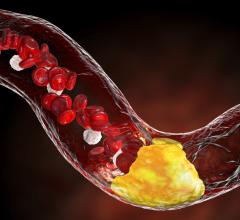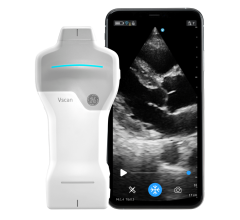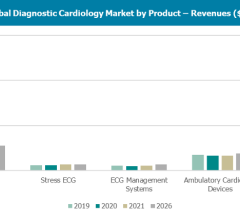
May 8, 2018 — Bardy Diagnostics Inc. (BardyDx) announced that the American Heart Journal has published the results of a head-to-head comparison of two patch-based arrhythmia monitoring systems. The study, "Comparison of two ambulatory patch ECG monitors: The benefit of the P-wave and signal clarity,"[1] concluded the BardyDx CAM single-channel patch ambulatory ECG monitor (AEM), designed specifically to enhance P-wave detection, identified significantly more arrhythmias and resulted in better, more informed clinical decision-making over the iRhythm Zio XT patch.
In the prospective time-paired comparative study — led by electrophysiologist Robert Rho, M.D., FHRS, FACC — 30 patients simultaneously wore a pectorally-placed arrhythmia monitoring patch (iRhythm Technologies, Zio XT patch) and a P-wave centric arrhythmia monitoring patch (Bardy Diagnostics, CAM patch) placed over the sternum with the intent of recording for 7 days. At the end of the monitoring period, the patches were removed at the same visit. The outcome measures were to compare diagnostic yield, ECG signal clarity, ease of use and comfort, and an assessment of differences in clinical decision-making based upon each device's rhythm diagnosis.
The study evaluated the differences in specific rhythm diagnosis and ECG clarity between the two commercially available patch AEMs. The CAM patch identified more arrhythmias (particularly atrial tachycardia, atrial flutter and non-sustained VT) than the Zio XT patch in contrast to atrial fibrillation, where both monitors performed adequately. ECG clarity was ranked as "high" in all CAM reports compared to the Zio XT reports (100 percent versus 16 percent, p<0.001). Both devices were considered user-friendly; however, the CAM patch was observed to be slightly easier to attach and remove, more stable and associated with less skin reaction. It was found that the superior signal clarity provided by the CAM patch may result in more informed clinical decisions in over a third of the patients.
Rho commented, "Most innovations in AEMs have focused on increased monitoring duration. Although duration of recording improves arrhythmia diagnosis, a very important factor is the clarity of the ECG recording. AEM diagnostics and ECG clarity vary with electrode location, signal noise, signal processing technology and electronic design. The clarity of an ECG signal is important in providing the ability to see P-waves during a recorded arrhythmia. The ability to accurately detect P-waves during an arrhythmia event allows physicians to make a more specific and confident rhythm diagnosis. This study demonstrates that significant differences in diagnostic yield exist between these two seemingly similar patch ambulatory ECG monitors applied during the same 7-day monitoring period and that these differences can impact clinical decision making."
The patch-to-patch comparison study builds on a study conducted by Warren Smith, MBChB, comparing the BardyDx CAM patch and a traditional Holter monitor, also in a simultaneous, paired assessment. That study demonstrated that the BardyDx CAM "resulted in a significantly improved rhythm diagnosis and avoided inaccurate diagnoses made by the standard three-channel Holter monitor" on a time-controlled basis.
The updated version of the CAM is called the Carnation.
For more information: www.bardydx.com
Reference:


 June 16, 2025
June 16, 2025 









